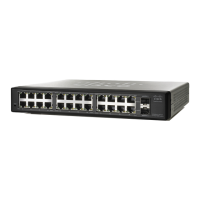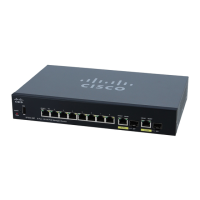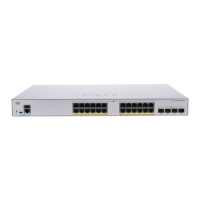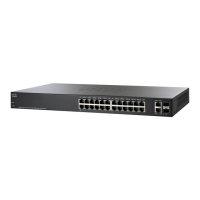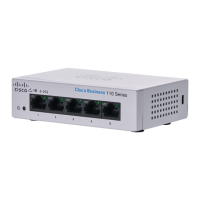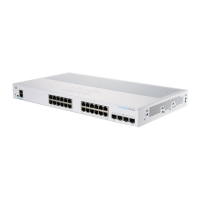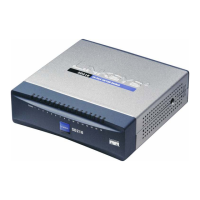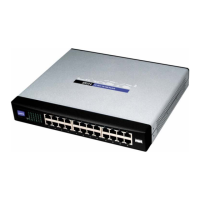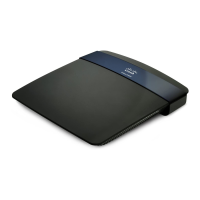Smartport
Common Smartport Tasks
Cisco Small Business 200 Series Smart Switch Administration Guide 154
12
STEP 3 Select the Smartport type that is to be assigned to the interface in the Smartport
Application field.
STEP 4 Set the macro parameters as required.
STEP 5 Click Apply.
Workflow3: To adjust Smartport macro parameter defaults, perform the following steps:
Through this procedure you can accomplish the following:
• View the macro source.
• Change parameter defaults.
• Restore the parameter defaults to the factory settings.
1. Open the Smartport > Smartport Type Settings page.
2. Select the Smartport Type.
3. Click View Macro Source to view the current Smartport macro that is associated with the selected
Smartport Type.
4. Click Edit to open a new window in which you can modify the default values of the parameters in the
macros bound to that Smartport type. These parameter default values are used when Auto Smartport
applies the selected Smartport type (if applicable) to an interface.
5. In the Edit page, modify the fields.
6. Click Apply to rerun the macro if the parameters were changed, or Restore Defaults to restore default
parameter values to built-in macros if required.
Workflow4: To rerun a Smartport macro after it has failed, perform the following steps:
STEP 1 In the Interface Settings page, select an interface with Smartport type Unknown.
STEP 2 Click Show Diagnostics to see the problem.
STEP 3 Troubleshoot, then correct the problem. Consider the troubleshooting tip below.
STEP 4 Click Edit. A new window appears in which you can click Reset to reset the
interface.
STEP 5 Return to the main page and reapply the macro using either Reapply (for devices
that are not switches, routers or APs) or Reapply Smartport Macro (for switches,
routers or APs) to run the Smartport Macro on the interface.
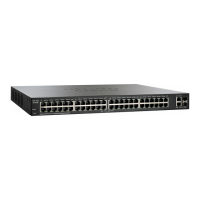
